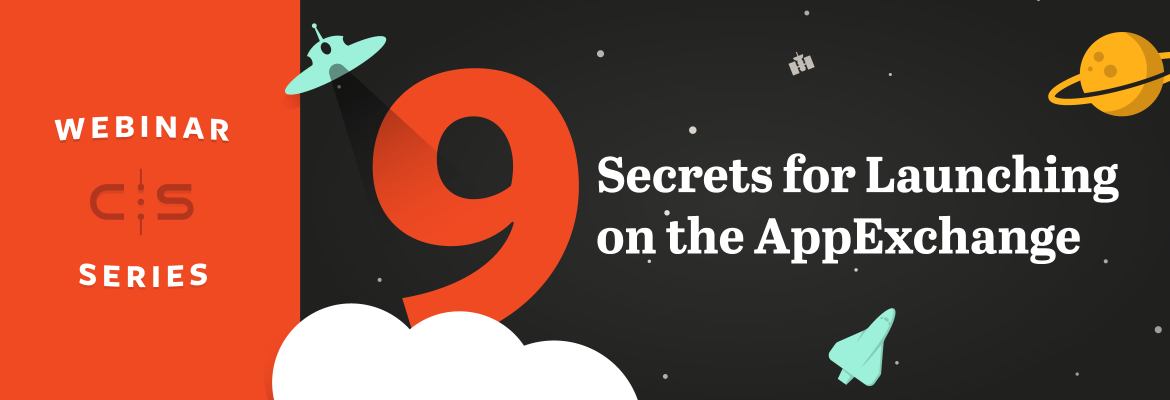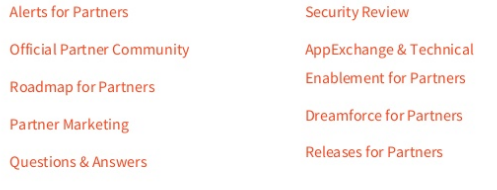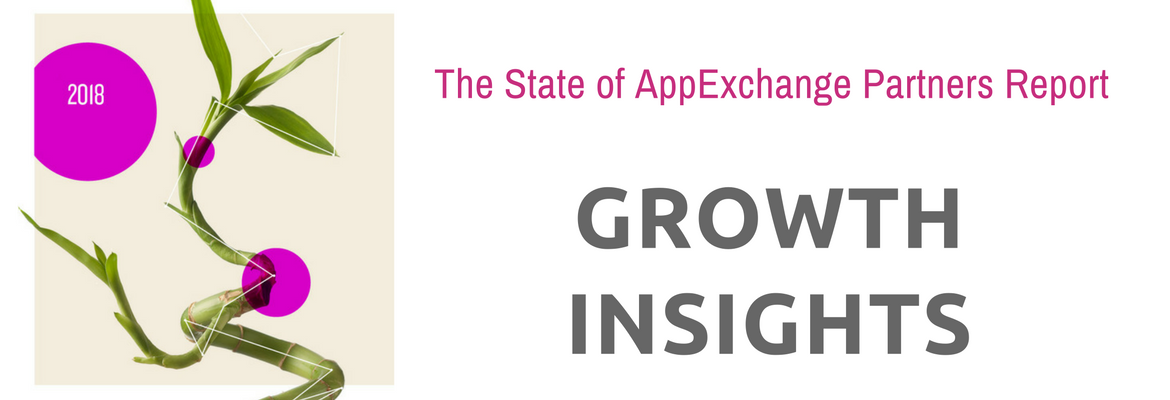
Last week, we hosted a webinar helping those new to the AppExchange process learn the ropes. Thanks to those of you who attended!
We want to make sure people who need some advice can access the information as easily as possible. You can check out the full recording, review our slides or read on for our notes from the event.
9 Milestones to Launch
Sign up for the Partner Community
It’s where all of the magic begins! The Partner Community is the hub of partner activity, a center for education, tools, news, events, submissions and more. It’s also where you handle the administration of your AppExchange listing.
Pro tip: be thorough in your sign-up form, because that information will fuel the initial steps to getting into the partner program.
Log in regularly, and it might be helpful to subscribe to relevant groups. Here are a few the ones we follow and recommend:
Take Advantage of Trailhead
Trailhead is an awesome resource for training, whether you have less than an hour or time to devour it all. Think of modules like lessons, and trails like courses. There are trails for aspiring ISV partners that’ll get your project started on the right foot.
Information is being added or updated all the time, and employees can earn certifications in the form of badges for completing trails.
Connect With Your BDR
Your BDR will be your gateway to the Salesforce ecosystem, and your guide through your Partner experience. He or she is motivated to help you through on-boarding, launch and after your Go-Live.
You’ll connect with your BDR after signing up for the Partner Community (remember how you were supposed to be thorough on that form?). They’ll reach out to fill in any information gaps and build upon what they know. Here’s how you can impress them from the outset:
- Have a working understanding of the Salesforce ecosystem.
- Have an idea of who your market is, and what your value proposition to your customers is.
- Have an understanding of what your total available market is.
- Have an idea of some of the complexities your product will have.
Technical Review
Time to get into the weeds. Technical review is a complicated but necessary step to confirm your product works within Salesforce, highlight any potential design pitfalls prior to launch, and ensure success when you do go live.
Prior to review, you’ll fill out a technical questionnaire about your product. Then, review happens as a product discussion with your Technical Evangelist (TE), which typically consists of an hour-long demo and conversation about your product.
Pro tip: have the Technical Architect or the senior developer for your product on that Technical Review call – you don’t want to leave this call with more questions…and another technical review.
Sign Your Partner Agreement
Through review? Time to put pen to paper! The partner agreement is a master agreement between you and Salesforce that defines your relationship, in regards to your product, and how you plan to go to market.
No two partner agreements are the same. The less complex your terms, the easier it is to progress to the part where you start making money — so we recommend keeping it simple.
Configure Your AppExchange Listing
Your storefront on the AppExchange, the listing helps your potential customers educate themselves on the value add your app could provide them.
The key to success is to be succinct:
- Show, don’t tell, with screenshots and images instead of verbosity.
- Keep your explanation of features to a single sentence.
- Respond quickly to reviews, with a clear engagement strategy.
- Provide multiple ways customers can contact you if they have a problem.
Pass Security Review
Salesforce sees trust as the cornerstone of its experience, so it takes very seriously the safety and security of its users. Security Review looks at your application code and all apps that yours integrates with to ensure that best-practice security standards are met.
Pro tip: Don’t be alarmed if your first attempt to pass Security Review fails. Most do. We guarantee that you pass Security Review, but we’ve done this more than 250 times and have been an AppExchange PDO since its pilot.
Budget 6-8 weeks for the process, and try to respond quickly whenever possible to streamline that window. The hardest issues we typically face are related to the web app as opposed to the product itself.
Establish Your Business Org
Your business org is where you’ll be managing your product’s licenses and any billing for your product, which is all outlined within your partner agreement. It will be the hub for your sales, marketing, and support operations for your AppExchange listing.
After your partner agreement is signed, you can submit a case in the Partner Community to get your free business org. You’ll get two free Sales Cloud Enterprise licenses, as well as access to the License Management and Channel Order apps. From License Management, you can see created leads and log into a customer’s org (with permission) to provide support.
Go Live!
You’ve passed the gauntlet! Pop the corks. You’re all set to publish to the AppExchange — which is an actual step you must take to make your product live. Go to the partner portal and click “Publish” to finish the job.
Here’s a few bits of advice on how to manage customer relationships now that you’re about to go live:
- Have a support strategy in place (think about this before clicking Publish!)
- Keep your Salesforce users separate from your web-app users — there are different rules and limitations
- Make sure your community of users feels like they have a voice and are heard (users have come to expect this from Salesforce)
- Stay up-to-date with the Salesforce landscape — there are quarterly releases which might affect technical aspects of your build
If you can’t get enough of our webinar content, you could skip to the webinar’s end for exclusive Q&A content — or you could ask us your questions directly! We’d love for you to be our next launch success story, so don’t hesitate to contact us.



